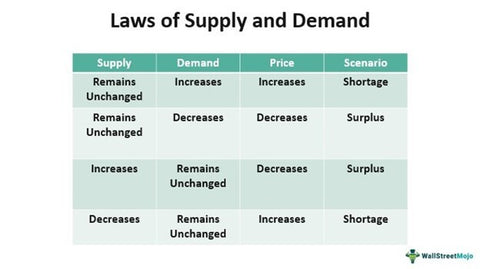An Economic Lesson: What ice cream tells us about current supply chain volatility and price increases?
When I was in university, I remember attending my first lecture on supply and demand. Rolling my eyes at the theory, thinking ‘this is obvious’. But to live it, has been a very different experience and one that I thought that I would share some insight as I now find this topic very interesting!
 2022 has been both an extremely successful and challenging summer season, leaving us with lots of thoughts on how to improve our strategy for next year. Here at Central Smith, we pride ourselves with our level of service to customers and our ability to satisfy customer needs. But like every summer, a new landscape is presented which adds both new challenges and opportunities to the game.
2022 has been both an extremely successful and challenging summer season, leaving us with lots of thoughts on how to improve our strategy for next year. Here at Central Smith, we pride ourselves with our level of service to customers and our ability to satisfy customer needs. But like every summer, a new landscape is presented which adds both new challenges and opportunities to the game.
Customers are buying more than ever. After being pent-up for 2 years after the pandemic, people want to have some fun with their families and ice cream is an affordable, and memorable experience for many people. (This is our favourite part, seeing smiling faces enjoying our product!) But ultimately this is creating high demand.
Now, if we have a high demand, we need to be producing more ice cream than we expected. This means we have to purchase more raw materials than we expected as well. So now, we must ask our suppliers to keep up with our added demand.
Take sugar for example:
There are an incredible number of food manufacturing facilities that require sugar in their products. Sugary products across the board are seeing higher than expected demand. This is adding pressure to the supply chain.
Did you know that in Canada there are only two companies that supply sugar? This summer one of those companies had a recall which stopped production for two weeks. Automatically, all sugar buyers then gravitate towards the other supplier but their demand is already exceeding their expectations to begin. Adding on this additional business isn’t sustainable for the other supplier. Again, adding pressure on the system.
Now, is when we think about “getting creative”. We start to look at bringing sugar in from another countries. Did you know that Canada has large tariffs on sugar from other countries? But, if it’s the only option to allow production to continue and to keep our staff employed, to keep our customers eating ice cream, of course we begin to more seriously consider this option. Luckily, our suppliers have been amazing and we did not have to purchase sugar abroad, but this gives you an understanding of some of the questions that we never thought we would have to ask ourselves.
We also, have many inclusions and ripples (think peanut butter cups, candies, chocolate chips!) in our product that have added sugars. Although, we may have been able to find an option for sugar, we also hope that our ingredient suppliers have also found an option for sugar that won’t affect our supply or price.
Ice Cream is just one example of some of the challenges in the food manufacturing industry. I thought that I would write this article as a ‘behind-the-scenes’ view of the market. It’s an extremely interesting time to be in business, and we feel like we are playing the game of monopoly daily! (A game, we like to play!)
We are thankful to our suppliers, our staff and our customers. And we promise to tackle this volatile market head-on.

